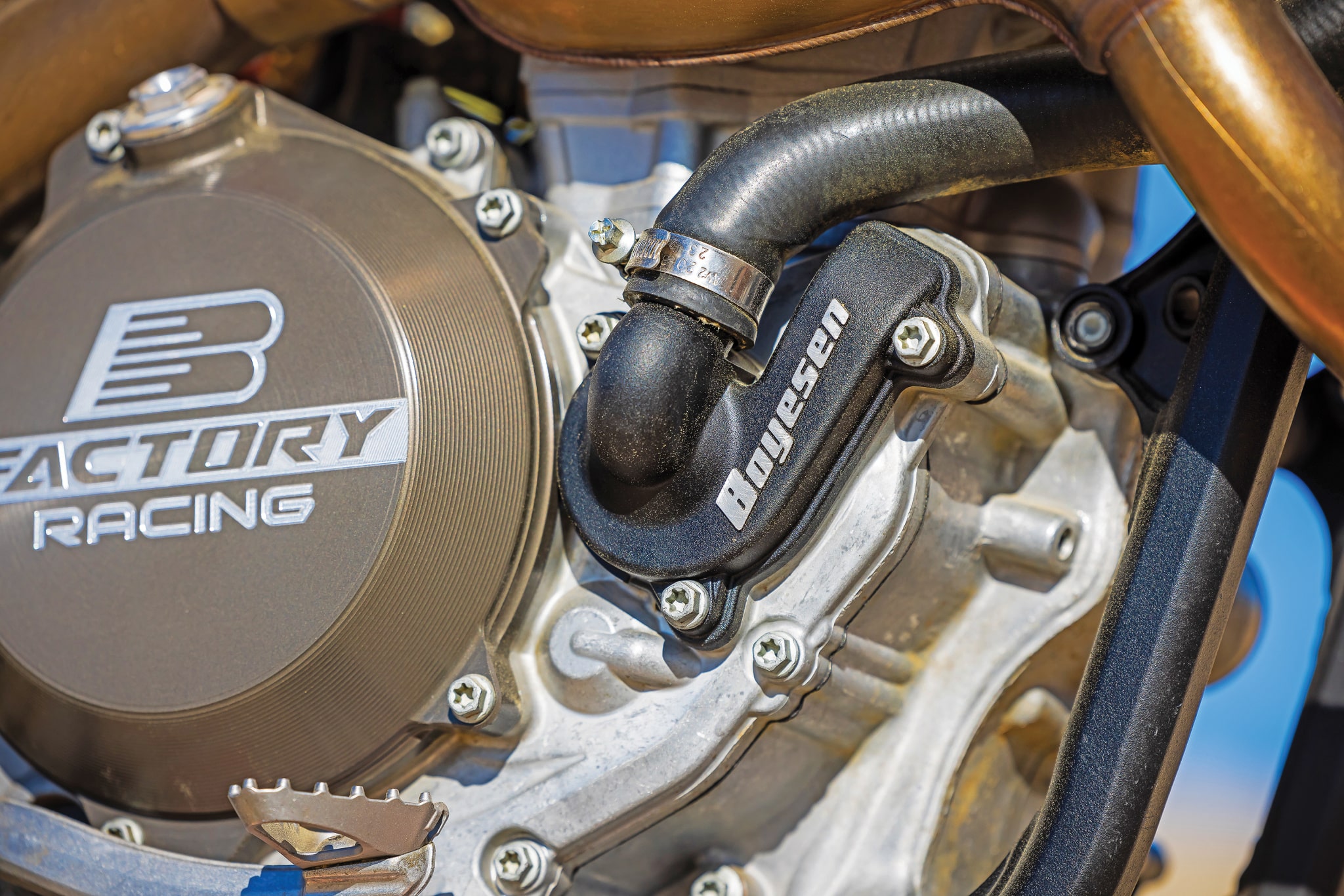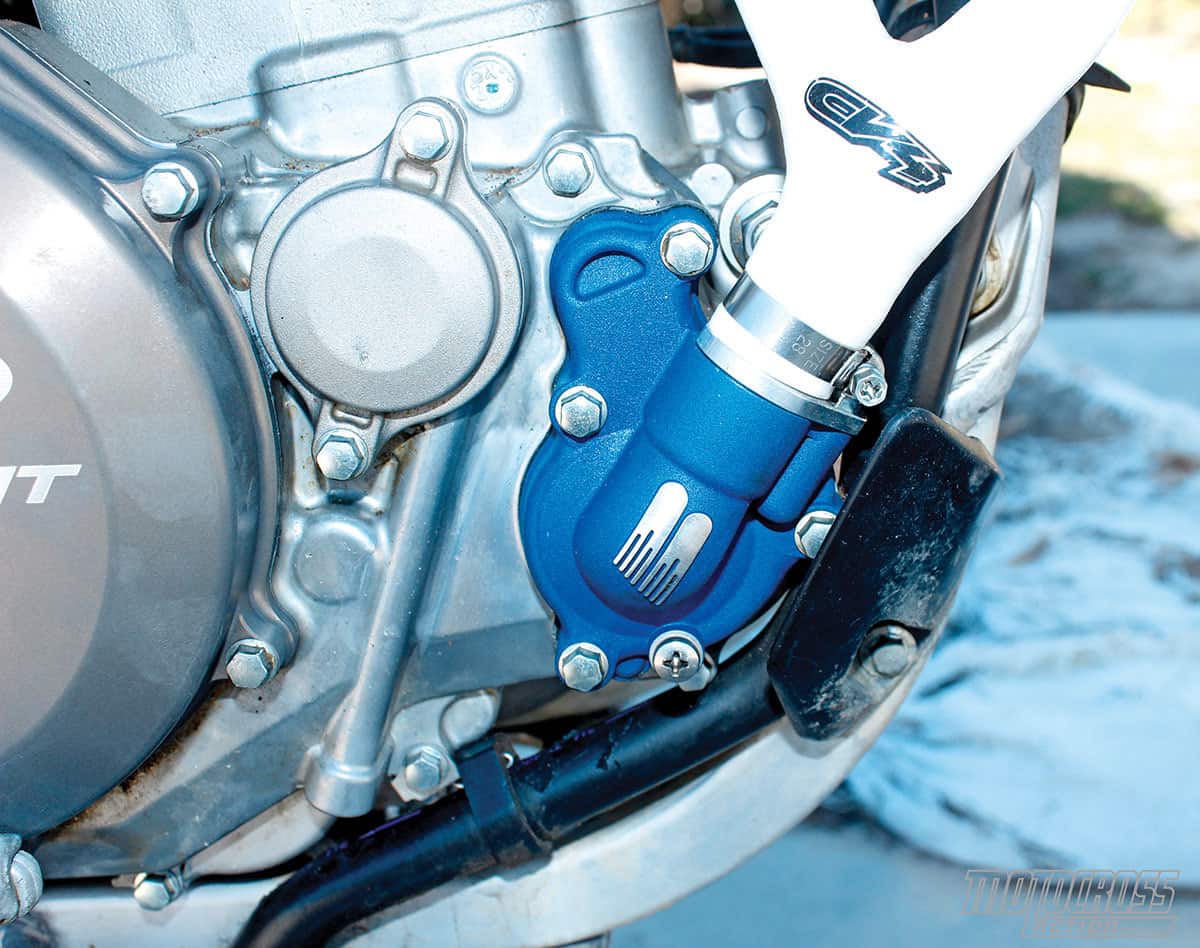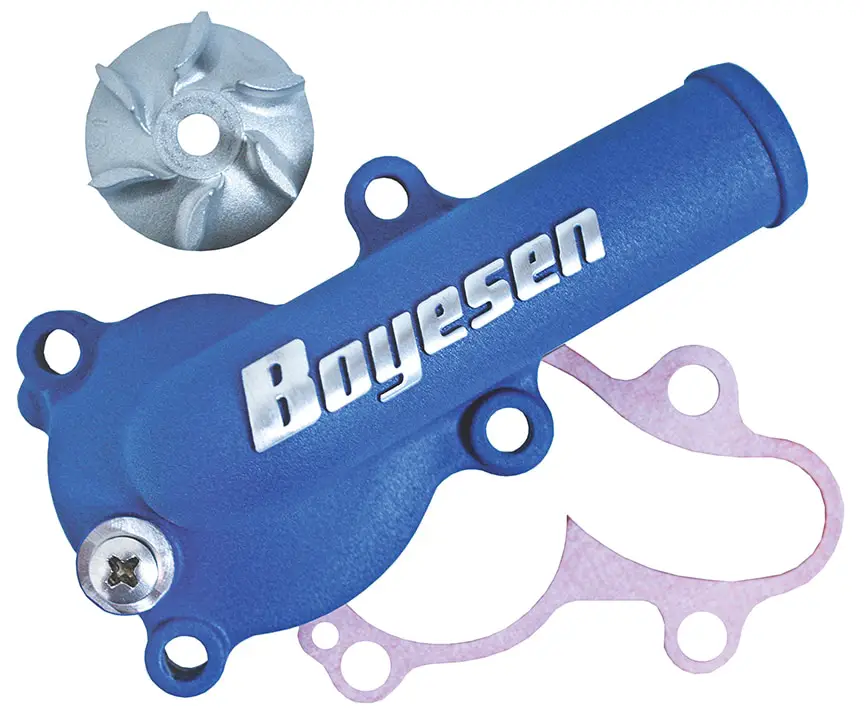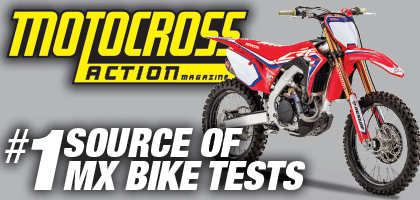TEN THINGS ABOUT THE BOYESEN SUPERCOOLER WATER PUMP

(1) Double-edged sword. Internal combustion engines are heat generators. Heat isn’t just a byproduct of horsepower, it’s the essence of it. The more heat an engine generates, the more power it produces. However, under heavy loads, the cooling system must work to dissipate the heat as it accumulates. If the engine overheats, the best-case scenario is that the performance drops; in the worst case, the engine seizes altogether.
(2) Air-cooled. Air-cooled engines of the 1970s relied on continuous airflow across the cylinder’s cooling fins to control the heat generated by the engine’s combustion process. The air-cooled process was dependent on the amount of overall surface area that could be used for disseminating the heat produced by the engine. Because of this, air-cooled engines had to run relatively lower compression ratios.
(3) History. In a time when motorcycle design was seeing rapid improvements yearly, it can be argued that one of the most important advances was liquid cooling. Machines like the 1981 Suzuki RM125 and the 1982 Yamaha YZ125 and YZ250 first employed production-based water cooling, making possible the beginnings of the potent and durable high-performance off-road engines that we ride currently.
(4) Risk. Although necessary for performance, heat can be extremely destructive to your engine if it is not managed properly. Internal combustion engines burn fuel hotter than the melting temperature of engine materials. Thus, when an engine is operating out of balance with its cooling system’s capacity, temperatures can rise to levels that damage the cylinder, piston and rings, and valve-train components.
(5) Parts. The cooling system on a modern dirt bike is made up of fluid (either water or coolant), a water pump, radiators, hoses and clamps, along with water passages integrated into the cases, cylinder and head. While it’s theoretically possible to overbuild the radiators, increase fluid capacity, pump volume and use oversized hoses to keep the engine as cool as ice, this approach would come with a significant weight penalty. That’s why motocross bike designers focus on balancing efficiency, ensuring every component is neither larger than necessary nor smaller than required.
 The Boyesen Supercooler water pump not only flows more water, but it lessens cavitation to reduce the amount of air bubbles in the water.
The Boyesen Supercooler water pump not only flows more water, but it lessens cavitation to reduce the amount of air bubbles in the water.
(6) Flow rate. The key to effective engine cooling lies in the flow rate of the coolant. For years, engine tuners believed that coolant needed to flow slowly to effectively absorb heat from the cylinders and heads while staying in the radiator long enough for heat to dissipate via convection. This logic seemed sound, but in reality, a faster coolant flow makes the system more efficient. The greater the temperature difference between the coolant and the engine components, the faster heat is transferred. When the cylinder is hot and the coolant is cold, the cooling system can absorb and carry away more heat, removing it from the engine more quickly and efficiently. While the fluid spends less time in the radiator, higher speed increases pressure, pushing the coolant through faster and creating more turbulence. This boosts heat transfer by exposing more heated molecules to the radiator’s surface, making faster flow actually improve cooling efficiency.
(7) Supercooler. Boyesen’s Supercooler water pump is all about boosting and optimizing water flow. The Supercooler has a cast-aluminum cover featuring bigger water inlets, a sculpted design, no casting seams, less restrictive bends, and a more efficient impeller shape, all to create less cavitation. Cavitation is air bubbles, and as you can imagine, bubbles don’t do much for cooling your engine.
(8) James Stewart. Boyesen’s Supercooler project started on two-strokes in the ’90s, but the concept really gained momentum in the four-stroke boom. James Stewart made the transition from the factory Kawasaki KX250 two-stroke in 2005 (his first year in the Premier class) to Kawasaki’s new KX450 four-stroke in 2006. James was hard on bikes, and four-strokes already run hotter than two-strokes. Kawasaki had their hands full, trying to keep Bubba’s bike cool enough. His KX450 had a factory oil cooler, a larger right radiator with a radiator catch tank (to ensure he never lost coolant) and Boyesen’s Supercooler water pump.
 (9) Hydrodynamic. Boyesen’s Supercooler has smoother interior surfaces that eliminate coolant flow pinch points, resulting in a hydrodynamically efficient interior that increases fluid flow re-entry rates into your bike’s engine. In the same way that engine tuners port and polish cylinders to optimize combustion and airflow, Boyesen’s Supercooler optimizes coolant flow, ensuring your high-rpm-running four-stroke delivers a consistent power character through even the longest motos on the hottest days.
(9) Hydrodynamic. Boyesen’s Supercooler has smoother interior surfaces that eliminate coolant flow pinch points, resulting in a hydrodynamically efficient interior that increases fluid flow re-entry rates into your bike’s engine. In the same way that engine tuners port and polish cylinders to optimize combustion and airflow, Boyesen’s Supercooler optimizes coolant flow, ensuring your high-rpm-running four-stroke delivers a consistent power character through even the longest motos on the hottest days.
(10) Impeller. The Supercooler’s impeller is designed to be hydrodynamically efficient, meaning that it not only propels the cooling fluid into the engine without cavitation, but also demands less parasitic loss from the engine. The anti-cavitation performance of the Pro-Flow impeller increases overall coolant flow rates and increases your bike’s ability to handle high heat dissipation.






Comments are closed.